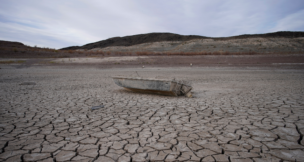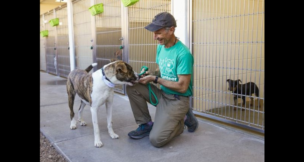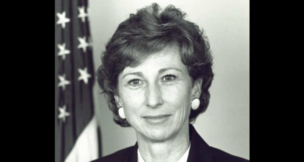State’s Museum Directors Find Ways To Deal With More Visitors, Fewer Funds
Arizona Capitol Reports Staff//June 2, 2003//[read_meter]
State’s Museum Directors Find Ways To Deal With More Visitors, Fewer Funds
Arizona Capitol Reports Staff//June 2, 2003//[read_meter]
Like two opposite reviews, judgment is still out on whether Arizona’s smaller museums are faring well in this sluggish economy.
Some say the number of visitors is up, others say it’s down. Museum directors do agree that the threat of funding cuts for the arts coupled with the fact that corporate donations have declined significantly the past few years has them scrambling for other funding sources.
“We’re working on other grants but the competition is going to be greater because so many other arts organizations are doing the same,” says Deborah Reeder, executive director, Phippen Art Museum, Prescott. Ms. Reeder says last year the museum received $20,000 from the Arizona Commission on the Arts.
With a budget of $350,000 to work from, that’s a significant portion of funding possibly lost. Because she expects the state to cut funds from the Commission budget and other arts funding sources, she says she is not sure what’s going to happen this year.
Many of Arizona’s museum directors report seeing fewer membership renewals. The good news is not one museum has closed since the terrorist attacks of Sept. 11, 2001, and admissions seem to be on the rise again.
Half Don’t Charge Admission
“Admissions, amazingly enough, are up from last year,” reports George Palovich of the West Valley Art Museum, “but actual memberships, like many other institutions, have fallen.”
To counteract the problem, Mr. Palovich, a former curator of the museum who is now the part-time administrative assistant, says the West Valley Art Museum has begun changing exhibits more frequently — every six weeks.
“It’s a killer for the curator, but it seems to bring more people in,” he says.
The fact that about half of Arizona’s museums do not charge admission may have something to do with an increase in attendance at some of the state’s smaller museums, says Roger Lidman, director of Pueblo Grande Museum in Phoenix.
“Free admission works well in a tight economy,” says Mr. Lidman, who is also a past president of the Arizona Association of Museums and is conducting a five-year state survey of Arizona museums.
With the average admission charge of $2 for adults and $1 for children, venues that charge more have been affected. Nevertheless, attendance has been increasing over the past three years, he says, adding that on the national level statistics show that attendance to cultural venues is “very solid.”
Tracy Wright Wagner, president, Central Arizona Museum Association (CAMA), says, “I can tell you that many museums are concerned about their shrinking budgets and how it will affect their ability to serve the public during these hard times.”
At Prescott’s Phippen, which is a member of CAMA, Ms. Reeder says she chose not to replace an employee who quit this year and laid off two part-time employees and the museum store manager.
“The store is still open, but we’re not quite sure how we’ll staff it. We’ll possibly utilize volunteers or job share,” she says. “We’re also working on a marketing plan, which is new for the museum.”
Likewise, a museum in Sedona is reaching out to the public through advertising. Janeen Trevillyan, president of the Scottsdale Historical Society, which operates the new Sedona Heritage Museum at Jordan Historical Park, says she’s seen an increase in attendance since the museum opened five years ago. She attributes that to “doing more advertising.”
“This year we added rack cards at the Visitors Center…People are discovering us now,” she says.
Patricia Smith, president of the Museum Association of Arizona and administrator of volunteers at the Desert Botanical Garden, says she talked recently to several of her museum members and they are reporting record-breaking attendance.
“When asked why, they said that the attendance is mostly locals and that it seems that the drop in tourism nationally meant that people were staying close to home and actually visiting their local museums and cultural institutions,” Ms. Smith says.
Jo Falls, director of public programs at Tohono Chul Park in Tucson and president of the Tucson Association of Museums, says, “No Tucson museums have closed as a result of the current economic conditions, though all are feeling the pinch of lost revenues. Some have raised admission fees, or instituted a fee when they had none before. There have been some layoffs of staff.”
Aside from changing exhibits more frequently, the state’s smaller museums are also adding gift shops, opening cafés during the summer and including more interactive programs to attract visitors.
Overall, Pueblo Grande’s Mr. Lidman says museums are resilient organizations that adapt well to change.
“They’re in business to be creative,” he says. —

















